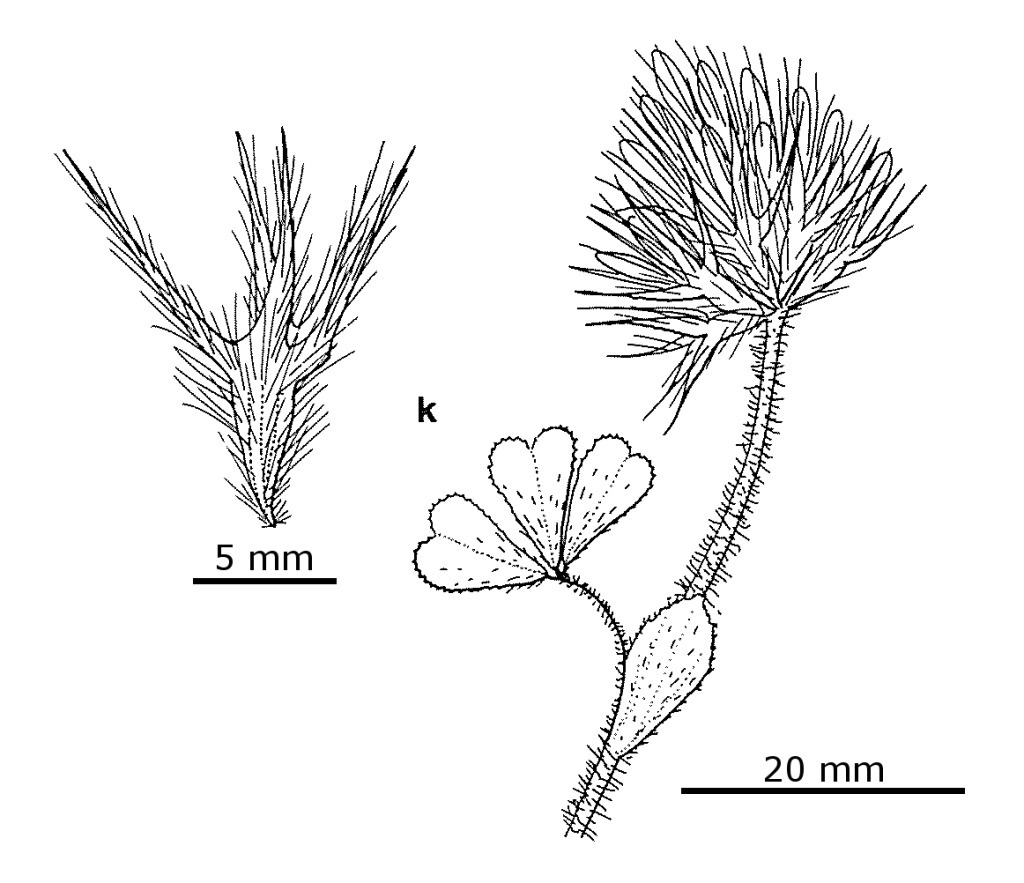Trifolium stellatum var. stellatum
Star CloverErect or ascending annual herb; stems few, 10–25 cm long, covered with appressed (not in Victoria) or patent hairs. Leaves palmately trifoliolate, short- to long-petiolate; leaflets obcordate, 5–12 mm long, 4–8 mm wide, hairy on both surfaces, upper margins sharply dentate; stipules membranous, prominently veined, dentate, hairy. Inflorescence mostly few–10-flowered, terminal, globular, 15–35 mm long, 15–30 mm wide, pedunculate; flowers on pedicels c. 1 mm long. Calyx to c. 15 mm long, villous, tube campanulate, 10-veined, throat fleecy but open, teeth about twice as long as tube, equal, spiny, spreading stellately in fruit; corolla 8–12 mm long, white or pink (in Victoria), rarely purple or yellow, not persistent; standard ovate to oblong, slightly longer than wings. Pod obovoid to pyriform, to c. 3 mm long, membranous, included in calyx tube; seed 1, ovoid, c. 2 mm long, brown or yellowish. Flowers mainly Sep.–Nov.
Wim, GleP, VRiv, NIS. Als naturalised WA, SA, Tas. Native to parts of northern Africa, western Asia, western and southern Europe. Currently known with certainty in Victoria only from the extreme south-west corner.
Zohary & Heller (1984) recognize 4 varieties of which only the type variety has been recorded for Victoria. The varieties differ mainly in their indumentum and corolla size and colour.
Jeanes, J.A. (1996). Fabaceae. In: Walsh, N.G.; Entwisle, T.J., Flora of Victoria Vol. 3, Dicotyledons Winteraceae to Myrtaceae, pp. 663–829. Inkata Press, Melbourne.
 Spinning
SpinningZohary M.; Heller, D. (1984). The genus Trifolium. Israel Academy of Sciences and Humanities, Jerusalem.
